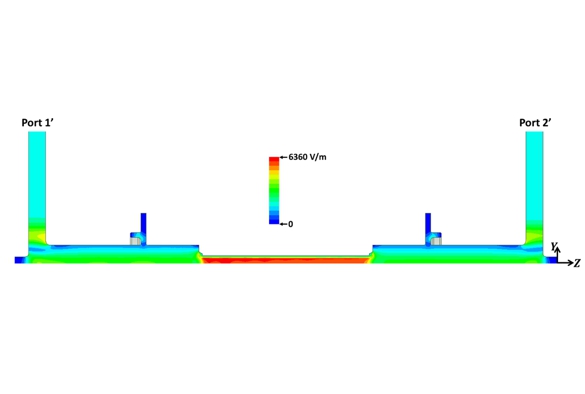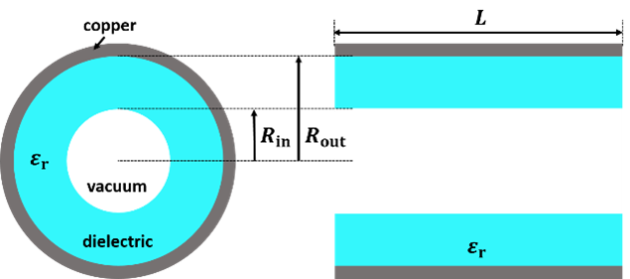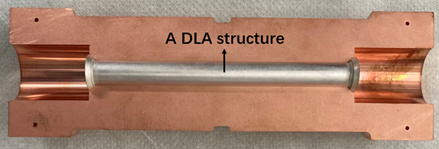New Article Published on Dielectric Acceleration Technology

Particle acceleration does not necessarily need metallic cavities. Dielectrics are electrically insulating materials such as ceramics, mica, glass, or plastics. Dielectric material builds an electric field response which slows down the phase velocity of travelling waves, allowing charged particles to surf on them, gaining energy. A dielectric-loaded accelerating (DLA) structure relies on a simple geometry where a uniform and linear dielectric tube is surrounded by a copper cylinder (see Fig. 1). It has a simpler geometry, a cheaper fabrication cost, a smaller diameter and a lighter weight as compared to the conventional disk-loaded metallic cavities.

Figure 1. Front view and longitudinal cross section of a cylindrical DLA structure (Image credit: Wei Y, et al. 2022 Phys. Rev. Accel. Beams 25, 041301, CC BY 4.0)
Researchers from the QUASAR Group work on the development of a DLA structure including the optimizations, manufacturing processes and preliminary experimental studies. Through the optimizations, a DLA structure is able to generate the correct electric fields (see Fig. 2) which are used to accelerate particles at a potential high gradient.

Figure 2. Electric field distribution for the full-assembly structure with a quarter geometry (Image credit: Wei Y, et al. 2022 Phys. Rev. Accel. Beams 25, 041301, CC BY 4.0)
In an open access paper just published in Physical Review Accelerators and Beams Yelong Wei and co-workers demonstrate the design and fabrication of an X-band DLA structure at CERN. Based on simulation studies, a prototype of the DLA structure was fabricated, as shown in Fig. 3. Results from low-power RF measurements and the comparison with simulated values are presented.

Figure 3. A prototype of the DLA structure (Image credit: Wei Y, et al. 2022 Phys. Rev. Accel. Beams 25, 041301, CC BY 4.0)
These theoretical design and experimental studies will be fed back to improve physical processes development and achieve high accelerating gradient for DLA structures. These studies will benefit future linear accelerator facilities such as compact linear colliders.
Further information:
Design, fabrication, and low-power rf measurement of an X-band dielectric-loaded accelerating structure
Yelong Wei, Hikmet Bursali, Alexej Grudiev, Ben Freemire, Chunguang Jing, Rolf Wegner, Joel Sauza Bedolla, and Carsten Welsch
Phys. Rev. Accel. Beams 25, 041301
https://doi.org/10.1103/PhysRevAccelBeams.25.041301
License CC BY 4.0